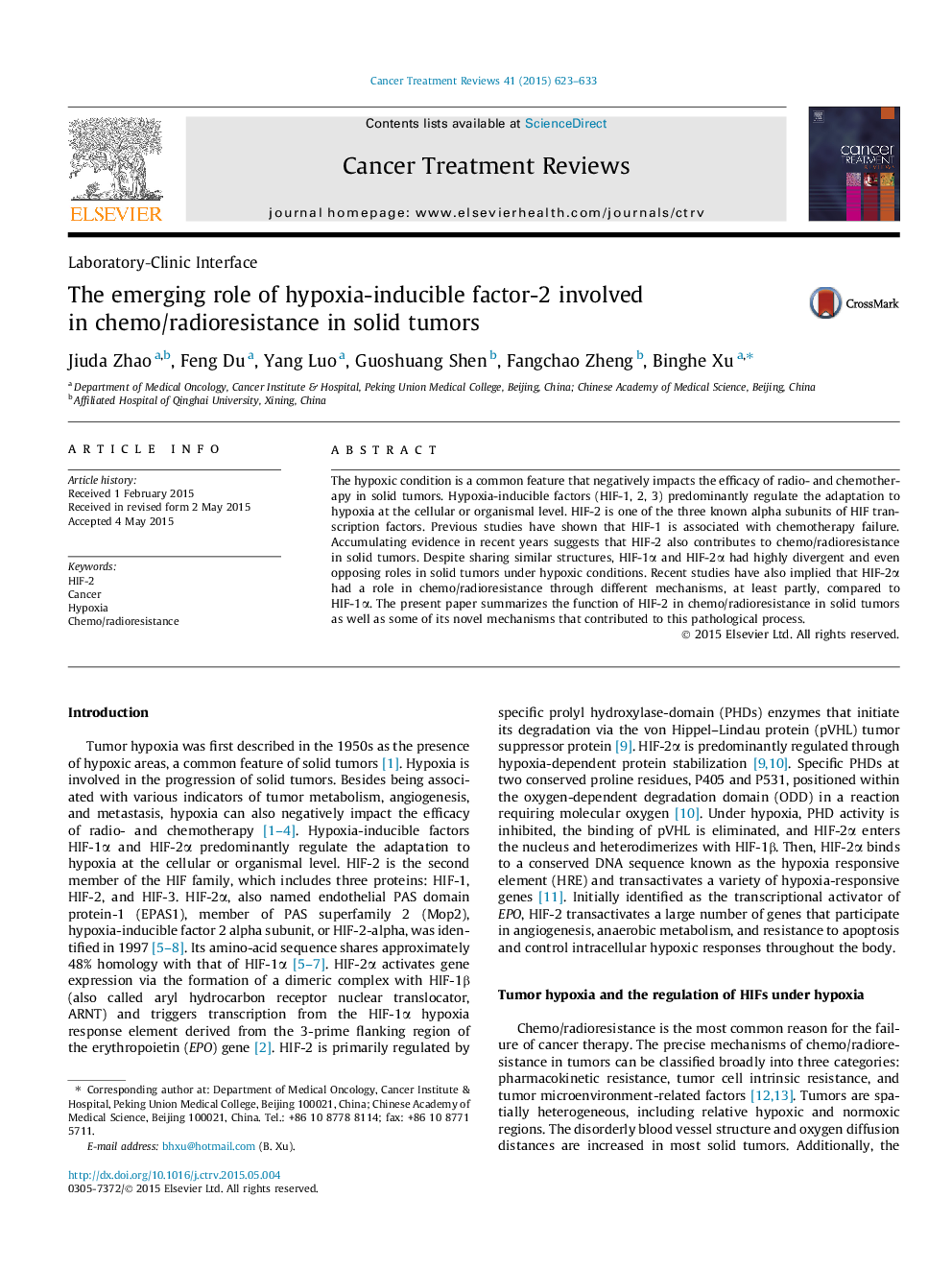| Article ID | Journal | Published Year | Pages | File Type |
|---|---|---|---|---|
| 3979773 | Cancer Treatment Reviews | 2015 | 11 Pages |
•We first summarize the contribution of HIF-2α in chemo/radioresistance in solid tumors.•Studies assessing the roles of HIF-2α on drug resistance are scarce compared to those on HIF-1 in solid tumors.•Some new mechanisms contribute to HIF-2 resistance to chemo/radioresistance.•We further discuss HIF-2 inhibitors and the different mechanisms of HIF-2- and HIF-1-mediated chemo/radioresistance.
The hypoxic condition is a common feature that negatively impacts the efficacy of radio- and chemotherapy in solid tumors. Hypoxia-inducible factors (HIF-1, 2, 3) predominantly regulate the adaptation to hypoxia at the cellular or organismal level. HIF-2 is one of the three known alpha subunits of HIF transcription factors. Previous studies have shown that HIF-1 is associated with chemotherapy failure. Accumulating evidence in recent years suggests that HIF-2 also contributes to chemo/radioresistance in solid tumors. Despite sharing similar structures, HIF-1α and HIF-2α had highly divergent and even opposing roles in solid tumors under hypoxic conditions. Recent studies have also implied that HIF-2α had a role in chemo/radioresistance through different mechanisms, at least partly, compared to HIF-1α. The present paper summarizes the function of HIF-2 in chemo/radioresistance in solid tumors as well as some of its novel mechanisms that contributed to this pathological process.
